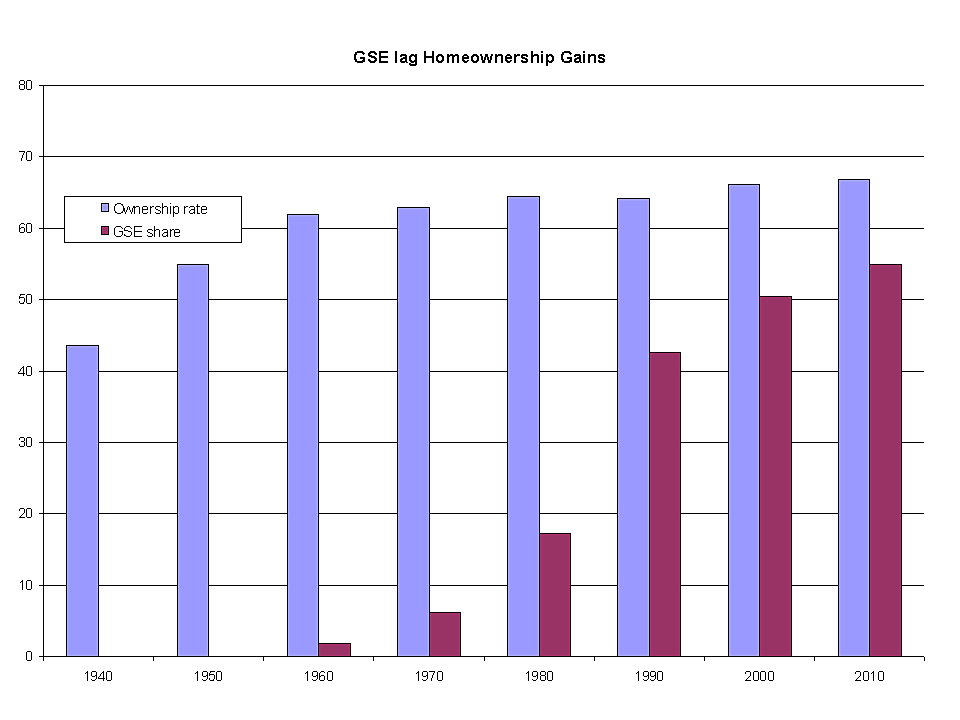Debates over the causes of the financial crisis sometimes center on whether Fannie Mae and Freddie Mac were “late to the party” in terms of subprime lending. As it relates to the recent crisis, I address this question elsewhere.
The GSEs and their apologists do claim to have been big contributors to one party: the expansion of homeownership in the United States. Yet the facts suggest otherwise.
The chart below compares the GSE’s market-share, in terms of home mortgage lending (as reported in the Fed’s Flow of Funds data), with the national homeownership rate (as reported in the Decennial Census).
The chart makes readily apparent that the largest increases in homeownership occurred before the GSEs played much of a role, if any, in the mortgage market. For instance, by 1970, the homeownership rate had reached 62.3, yet the GSE market-share was just above 6%. Even a decade after Fannie was “privatized,” the GSE market-share was still under 20%.
The real growth in GSE activity occurred during the 1980s, particularly the later half. The reason? The implosion of the savings and loan industry. It seems we simply substituted several thousand mismanaged and under-capitalized thrifts for two large mismanaged and under-capitalized thrifts. Interestingly enough, as the GSEs were doubling their market-share in the 1980s the homeownership rate actually fell. By the time the GSEs had reached a market-share of 50%, the U.S. homeownership rate had already come close to the rate we see today, of 66%.
The data clearly show that we became a nation of homeowners with little assistance from Fannie and Freddie. Not only did they join that party late, they simply took the place of the last group to ruin the party: the S&Ls.

